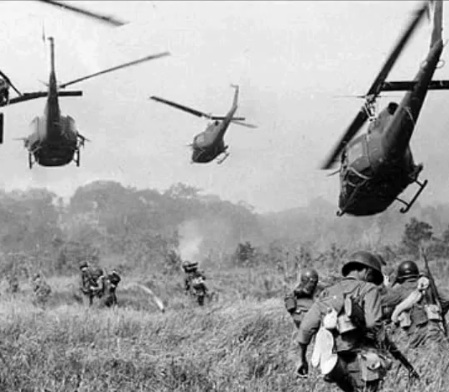
Screen shot from an archive reel of footage from the Bay of Pigs
The National Security Archive has, on the fiftieth anniversary of the Bay of Pigs invasion, filed a Freedom of Information Act lawsuit to force the release of the CIA's "Official History of the Bay of Pigs Operation." The lawsuit charges the CIA has "wrongfully withheld" a multi-volume study the Archive requested in 2005 that is "the most important and substantive CIA-produced study of this episode."
Director of the Archive's Cuba Documentation Project Peter Kornbluh has called on the CIA to release the report under President Barack Obama's Executive Order 13526 , which states that "no information may remain classified indefinitely." (Of course, denying FOIA requests doesn't mean documents will be classified indefinitely. It just means they aren't getting released now.)
One might wonder, how long does this have to go on before someone goes ahead and declassifies the material? What is the government hiding? Is there any chance someone will just leak the report to WikiLeaks and end this travesty?
The Bay of Pigs invasion is an episode in US foreign policy that is considered to be a sham. Beyond that, it's unclear what has been learned from the incident.
On February 3, 1961, a memo for Secretary of Defense Robert McNamara was written titled, "Military Evaluation of the CIA Para-Military Plan, Cuba." It detailed the following in relation to overthrowing the Castro Regime: the operation would be dependent on local Cuban support, the beachhead area would be the best area in Cuba for accomplishment of a Task Force mission, an airborne assault would likely not be opposed and thus would be successful, and an amphibious assault would be successful even if lightly opposed. The plan detailed in the memo had a "likelihood of achieving military success" depending on political factors like "the size of a popular uprising or substantial follow-on forces." It would not "necessarily require overt US intervention."
This document and other documents that have already been declassified and are in the public domain detail the reprehensibility of the invasion. Anyone reading them would be forgiven for wondering if those developing foreign policy and running the military and intelligence agencies in the US throughout the past decade have been inspired and influenced by plans developed for Cuba in the run-up to the Bay of Pigs.
The world might consider what has changed since then. US operations in Afghanistan, Iraq, Libya, Colombia, Somalia, Pakistan and Yemen all can be compared to the Bay of Pigs. WikiLeaks has lifted the veil on much of these US operations revealing that assassinations or extrajudicial/targeted killings of people play a key part in the global "war on terror." Through the Afghanistan War Logs, it was revealed that the US has a unit, Task Force 373, which hunts top Taliban for detention or death without trial. The Logs also showed "non 373" operations involving drones. Drones happen to be a 21st Century tool for the US that could be at the center of an assassination plot. What might have happened if the CIA under the Kennedy Administration had been able to employ drone technology to go after Fidel Castro?
Also, recently it was "discovered" the CIA had a secret al Qaeda assassination program that Vice President Dick Cheney possibly prevented the CIA from telling Congress about. Far more similar to the Bay of Pigs operations, the program that, in July 2009 was reportedly canceled , possibly involved "attempts to use assassins to kill or capture senior terrorists." The plan involved the development of "small paramilitary teams that could carry out "surgical' strikes on high-value targets" but supposedly was "bogged down" with "basic operational and logistical questions."
While a 1976 order was signed by President Gerald Ford and banned the CIA from carrying out assassinations, the world was declared a battlefield in the aftermath of 9/11. (Actually, one might ask if the US has ever not thought the world is its battlefield.) Targeted assassinations of any terror suspects became permissible no matter the legal questions they raised. In fact, as Glenn Greenwald covered in June of 2010, the Obama Administration picked up where the Bush Administration left off and began to justify the government's right to target Americans for assassination without giving them due process.
With the US intervening along with support from France, the UK and various other countries, it appears the Washington Consensus has not changed. CIA boots are indeed on the ground in Libya. What they are doing exactly is largely unknown (although it has been reported they are gathering intelligence). Furthermore, the issues officials thought "Cuban Exiles" could pose are the same issues those following the situation closely might warn about today when talking about the rebel forces in Libya.
The CIA counted on a sizeable number of indigenous volunteers and had arms ready for 1,500 volunteers. Officials noted that a "major problem could arise in control of indigenous personnel." The invasion also called for contact with "guerrilla bands" operating in the general area of the operations.
"According to currently available intelligence, it is estimated that within a 25 mile radius of the objective area, five guerrilla bands with a total estimated strength of 660 may cooperate with the task force. Another guerrilla band with an estimated strength of 90 is operating approximately 30 miles west of the objective area. Two additional guerrilla bands are operating some 40 miles north of the objective area. The concept is for those bands to reinforce the invasion force in the beachhead area. This part of the concept is not considered sound."[emphasis added]
On local indigenous support, officials noted "continued support of the invasion would depend largely on the identification of leaders with the hopes and aspirations of the bulk of the population." Noting the perils of "wholesale bombings," officials understood force had to be restrained or else Cubans would, in reaction to a high loss of life, unite behind Castro.
April 15, 1961, eight B-26 planes from the Cuban Expeditionary Force carried out air strikes to destroy Castro's air capability. Similar to what happened with the two Libyan pilots that defected to Malta, a Cuban pilot and three of his comrades landed at 7 am at the Miami International Airport claim to have defected from Castro's air force. But, what happened was suspicious: They claimed to have carried out attacks against Castro's airfields but reporters noted the planes' machine guns had not been fired and the planes' noses were made of solid metal while Castro's B-26 planes were made of plastic.
The "Benghazi Rebels" of the Bay of Pigs invasion were to set up a "counterrevolutionary government" to be recognized on Cuban soil. The strategy involved a "propaganda action plan " to maintain the morale of the anti-Castro fighting forces, instruct pro-patriot forces and tell them how to join the fight, intimidate pro-Castro forces and make them defect or become panic-stricken, confused and uncertain, present the desired picture of the internal fighting, and appeal to other government and peoples for support through the dramatic presentation of declarations of the fighting forces and new government. But, the invasion massively failed. The Cuban military forces were able to overwhelm the planned operation and many of US-backed forces involved were kidnapped or killed.
In retrospect, it seems that the CIA planners were hoping to be able to assassinate Castro and that would be ultimately how the Bay of Pigs operation would succeed. That's not surprising given the following document titled "A Study of Assassination ," which was likely published around December 31st, 1953. Detailing how assassination could be employed in foreign operations, the document took multiple Freedom of Information Act requests before the CIA finally declassified some fourteen hundred pages of over one hundred thousand pages estimated to be in the secret archives on the "Guatemalan destabilization program."
(Note: You can view every article as one long page if you sign up as an Advocate Member, or higher).





